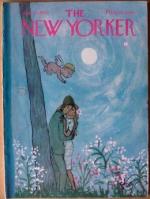|
This section contains 484 words (approx. 2 pages at 300 words per page) |

|
Hapivorth 16, 1924 and Salinger's other fiction published in book form have long resonated in the minds of readers, particularly adolescents, younger adults, and others sympathetic to the American "youth culture" of the post World War II period. They tend in general to reflect a mystique of the helpless child, and often the gifted child, who is seen as terribly vulnerable to danger. This child is a precious creature set aside for a special destiny, a precocious and charismatic young person possessing mysterious powers; he/she may soon meet death. This idea was interestingly foreshadowed in his first book The Catcher in the Rye (1951; see separate entry) through Holden Caulfield's speech to his young sister Phoebe.
He describes his vision of "thousands of little kids" playing in a large rye field, with no large person around, except him, "standing on the edge of some crazy cliff," and it's...
|
This section contains 484 words (approx. 2 pages at 300 words per page) |

|




